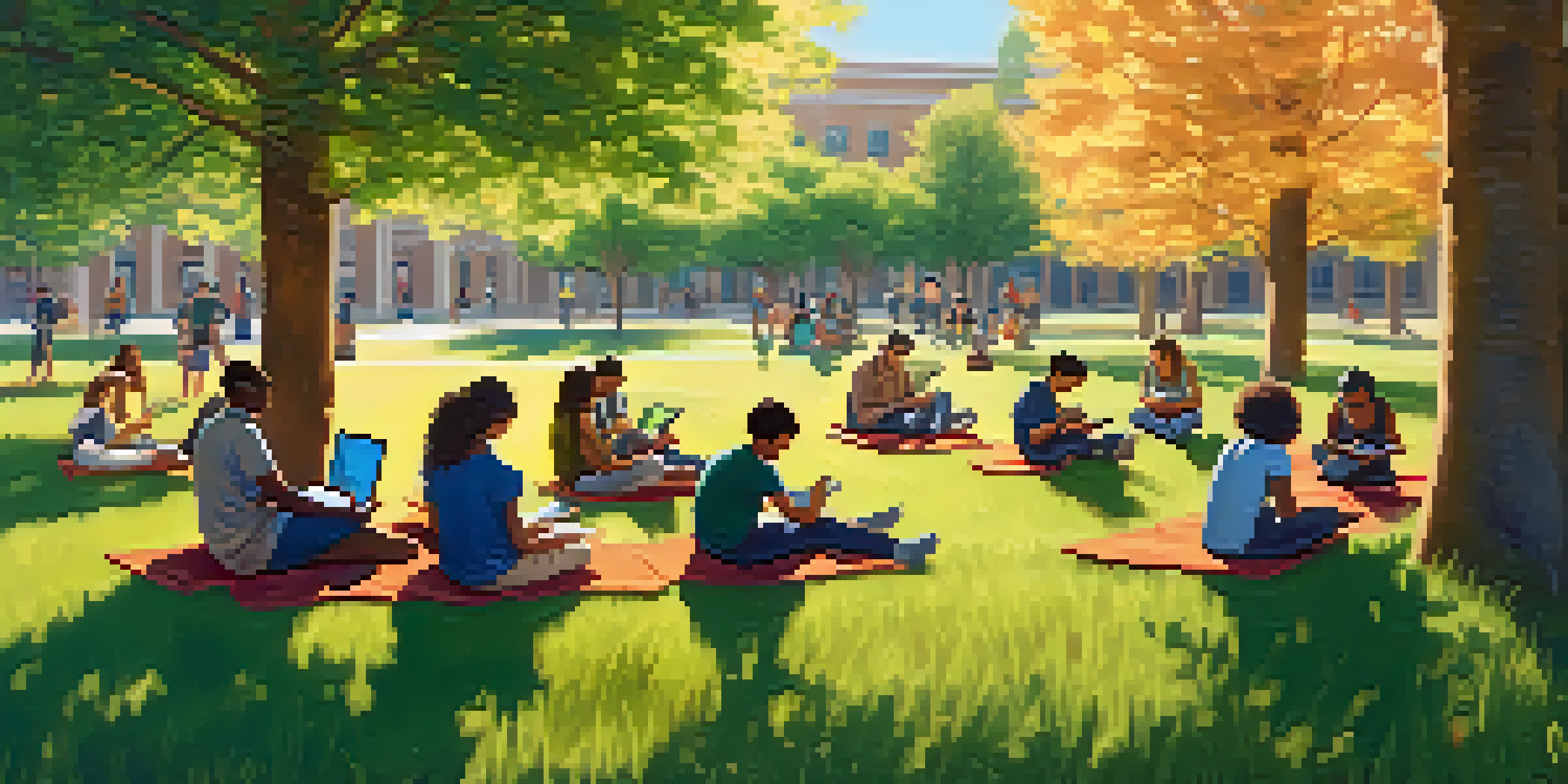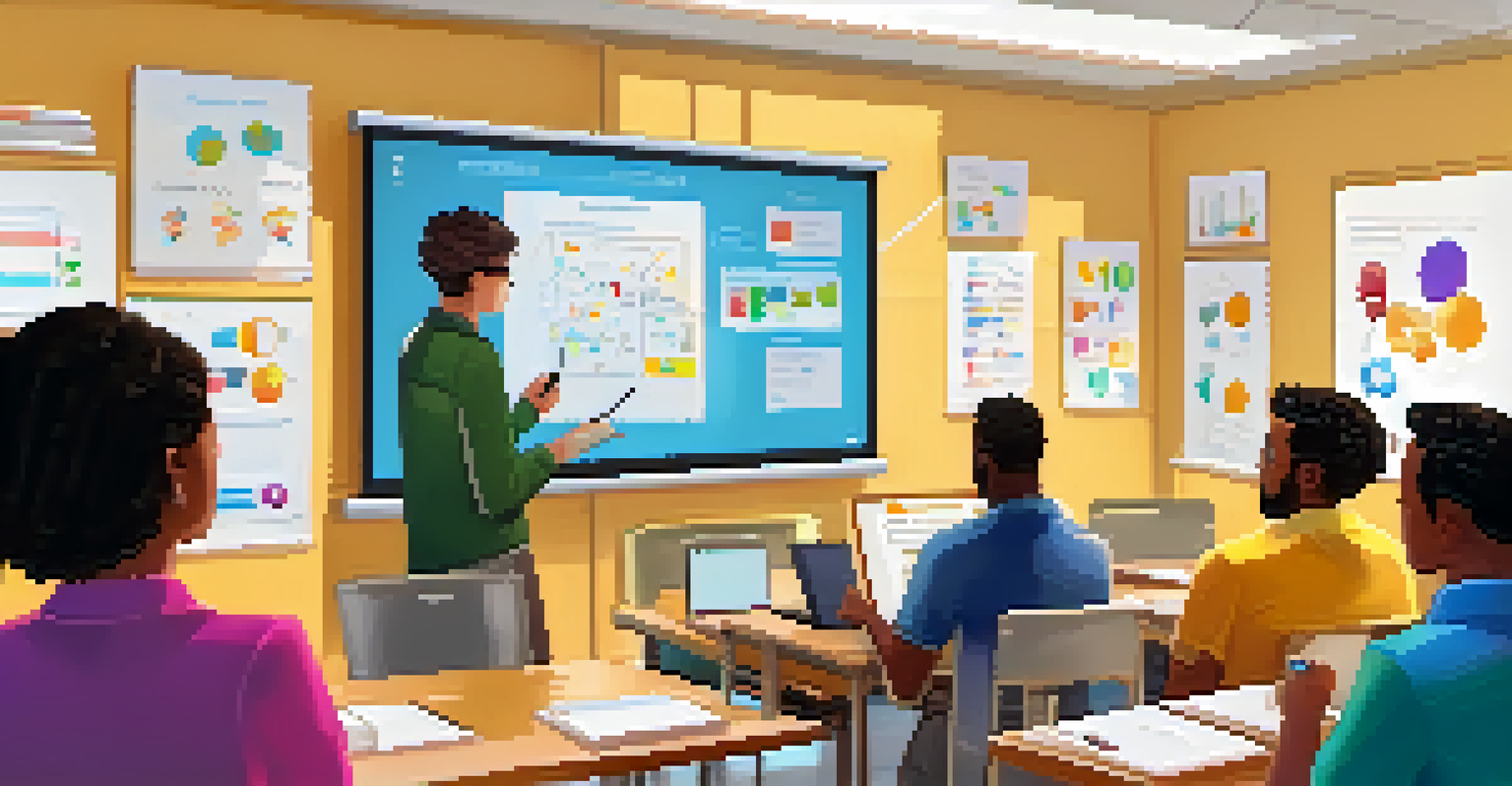Microlearning in Higher Education: Trends and Applications

What is Microlearning and Why It Matters
Microlearning is an educational strategy that delivers content in small, digestible units. This approach caters to shorter attention spans and makes learning more accessible for students. By breaking down complex topics into bite-sized pieces, microlearning helps learners retain information more effectively and encourages continuous engagement.
Microlearning is the antidote to information overload, breaking down complex ideas into bite-sized pieces that are easier to digest.
In today's fast-paced world, traditional learning methods may struggle to keep students' attention. Microlearning fills this gap by providing quick, focused learning experiences that can be easily integrated into busy schedules. This flexibility not only enhances learning but also supports students in mastering concepts at their own pace.
As technology continues to evolve, microlearning has gained traction in higher education institutions. It aligns well with the increasing demand for personalized learning experiences and the need for immediate application of knowledge, making it an essential tool for educators.
Trends Shaping Microlearning in Higher Education
Several trends are influencing the adoption of microlearning in higher education. One prominent trend is the rise of mobile learning, which allows students to access microcontent on-the-go, whether they're commuting or taking a break. This accessibility encourages spontaneous learning moments, making education more flexible and convenient.

Another significant trend is the use of gamification in microlearning modules. By incorporating game-like elements, such as quizzes and rewards, educators can foster a more engaging and motivating learning environment. This not only captures students' attention but also helps reinforce key concepts through interactive experiences.
Microlearning Enhances Retention
By breaking down complex topics into bite-sized pieces, microlearning helps learners retain information more effectively.
Additionally, the integration of artificial intelligence (AI) and adaptive learning technologies is transforming how microlearning is delivered. These tools can tailor content to individual learning styles, ensuring that each student receives a personalized education that speaks to their unique needs.
Effective Applications of Microlearning in Courses
Microlearning can be effectively applied in various ways within higher education courses. For example, professors can create short video tutorials or infographics that summarize complex theories, allowing students to revisit them as needed. This approach not only aids retention but also fosters a deeper understanding of the subject matter.
The future of learning lies in the ability to adapt and respond to the changing needs of students, and microlearning is a key component of that evolution.
Discussion forums can also benefit from microlearning by encouraging students to share brief insights or reflections on specific topics. This creates a collaborative learning environment where students can learn from one another's perspectives, enriching their educational experience.
Moreover, assessments can be transformed through microlearning, with quizzes and flashcards designed to reinforce learning objectives. These tools provide immediate feedback, allowing students to gauge their understanding and focus on areas that need improvement.
Challenges and Considerations in Implementation
While microlearning offers numerous benefits, there are also challenges that institutions must navigate. One major hurdle is the need for quality content that is both engaging and informative. Educators must ensure that microlearning materials are well-researched and effectively designed to facilitate learning.
Another challenge lies in integrating microlearning into existing curricula. Institutions may struggle to find the right balance between traditional teaching methods and microlearning strategies. This requires careful planning and collaboration among faculty to ensure a seamless learning experience for students.
Technology Boosts Microlearning
The integration of multimedia tools and learning management systems enhances the microlearning experience, making it more engaging and accessible.
Lastly, as with any educational technology, there is a learning curve for both instructors and students. Training and support are essential to help educators create effective microlearning modules and to ensure that students feel comfortable using these new tools.
The Role of Technology in Enhancing Microlearning
Technology plays a crucial role in the effectiveness of microlearning in higher education. Learning management systems (LMS) can host microcontent, making it easily accessible to students. These platforms also facilitate tracking progress and engagement, allowing educators to assess the impact of their microlearning initiatives.
Additionally, the use of multimedia tools, such as podcasts, videos, and interactive simulations, can enhance the microlearning experience. These resources cater to various learning styles and keep students engaged, making complex subjects more relatable and easier to grasp.
Moreover, technologies like augmented reality (AR) and virtual reality (VR) are beginning to emerge in microlearning applications. These immersive experiences can provide real-world contexts that deepen understanding and enhance retention, pushing the boundaries of traditional learning.
Microlearning's Impact on Student Engagement
One of the most significant advantages of microlearning is its potential to boost student engagement. By presenting information in concise formats, students are less likely to feel overwhelmed, fostering a more positive attitude towards learning. This increased engagement can lead to higher motivation and improved academic performance.
Moreover, microlearning encourages active participation. When students interact with short, focused content, they're more likely to take ownership of their learning journey. This sense of agency can enhance their overall educational experience and lead to greater satisfaction.
Challenges in Microlearning Adoption
Institutions face challenges such as the need for quality content and the integration of microlearning into existing curricula.
Ultimately, microlearning creates a dynamic learning environment that empowers students. By promoting continuous learning and curiosity, it encourages students to explore topics beyond the classroom, cultivating a lifelong passion for education.
Future Directions for Microlearning in Higher Education
As microlearning continues to evolve, its future in higher education looks promising. One direction is the potential for more collaborative microlearning experiences, where students can work together on short projects or challenges. This could foster teamwork and enhance critical thinking skills.
Furthermore, the expansion of data analytics in education may refine microlearning strategies. By analyzing student performance and engagement data, educators can continually optimize content, ensuring it remains relevant and effective.

Finally, as the landscape of higher education shifts, microlearning may play a vital role in addressing the needs of diverse learners. By offering flexible, tailored learning experiences, institutions can better support all students, helping them thrive in a rapidly changing world.